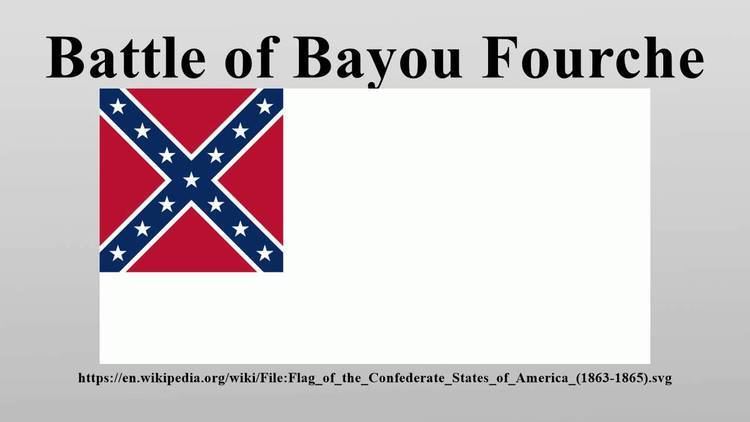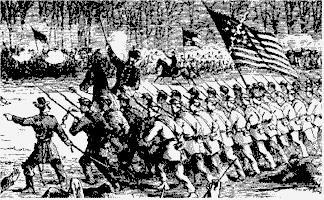6,000 cavalry,18 guns 2,500 cavalry | Date 10 September 1863 | |
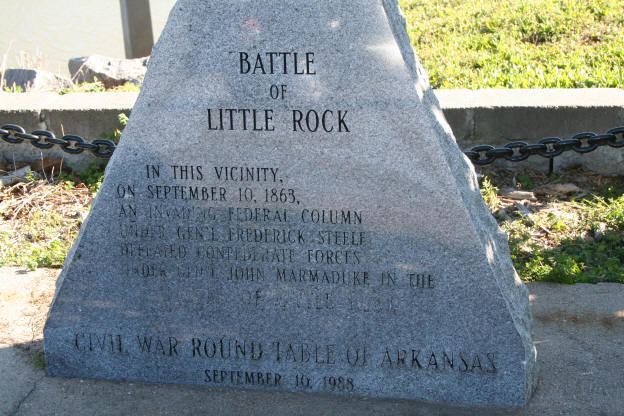 | ||
Similar American Civil War, Battle of Elkin's Ferry, Battle of Chalk Bluff, Battle of Devil's Backbone, Battle of Cane Hill | ||
Battle of bayou fourche
The Battle of Bayou Fourche (September 10, 1863), also known as the Engagement at Bayou Fourche, was the most decisive battle of the Little Rock Campaign. The engagement was the culmination of an expedition launched by Major-General Frederick Steele on August 1, 1863, to capture Little Rock, Arkansas. The campaign included engagements at West Point, Harrison's Landing, Brownsville, Reed's Bridge and Ashley's Mills (or Ferry Landing).
Contents
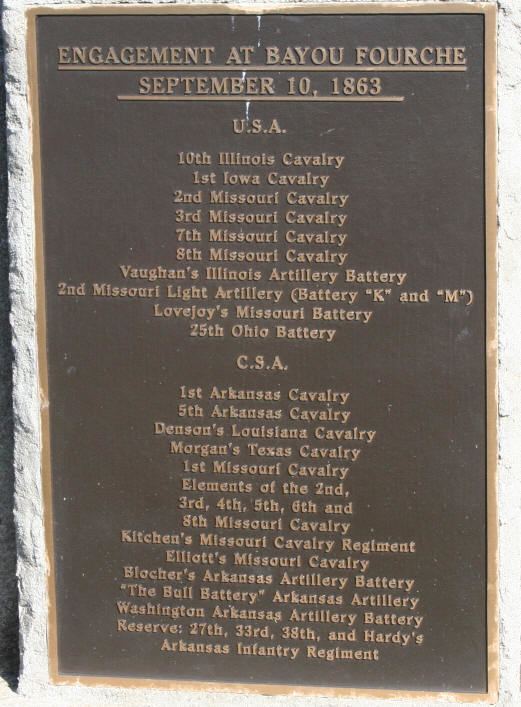
Prelude
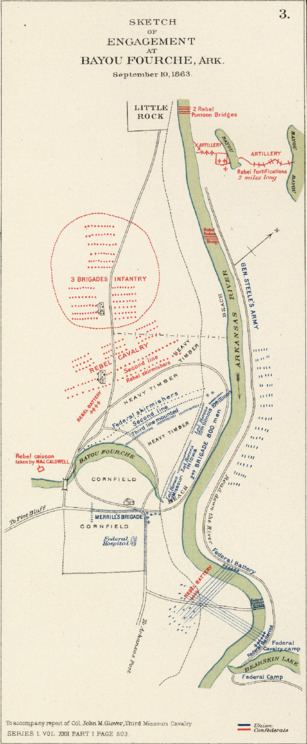
On July 4, 1863, Vicksburg, Mississippi – the Gibraltar of the Confedracy – fell. With the Mississippi River again, in U.S. President Abraham Lincoln's words, running "unvexed to the sea," Steele, commanding the "Arkansas Expedition", preceded from Helena, Arkansas on August 10 to lead the invasion of 12,000 troops west into Arkansas. Awakening to the distant rumble of artillery on September 10 citizens of Little Rock found themselves in the vortex of the conflict.
Battle
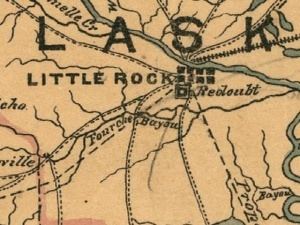
On September 10, 1863, Steele sent a cavalry division led by Brigadier-General John W. Davidson across the Arkansas River to advance on Little Rock, Arkansas while he moved against Confederates strongly entrenched on the north side of the river. In his thrust toward the state capitol, Davidson ran into Marmaduke's and Walker's divisions commanded by Brigadier-General John S. Marmaduke near the Bayou Fourche. Aided by field artillery from the north side of the river, Davidson forced Marmaduke out of his position and sent the defenders fleeing back to Little Rock, which fell to U.S. troops that evening.
Aftermath

Major-General Sterling Price, commanding at Little Rock, fell back to Arkadelphia on the 14th, and eventually reestablished his command at Camp Bragg, Arkansas. Governor Harris Flanagin relocated the state capitol to Washington, Arkansas where it remained for the rest of the war. The fall of Little Rock sealed Arkansas' fate and helped to further demoralize Confederate citizens west of the Mississippi River, further isolating them from the rest of the South.
Battlefield
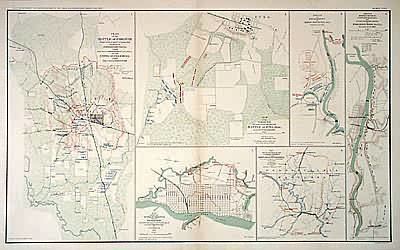
The growth of Little Rock has obscured many of the sites associated with the battle and subsequent evacuation of the city. Today, several markers and monuments are located inside the Bayou Fourche Battlefield, but further expansion of Little Rock National Airport threatens to consume additional land.
